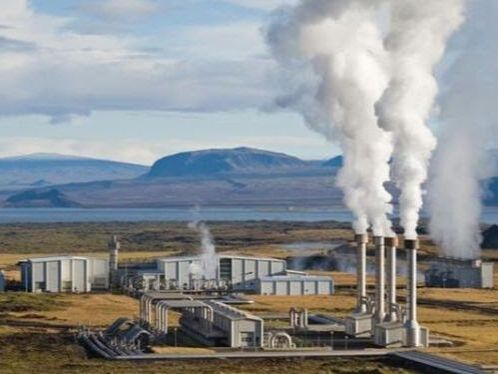Every civilization is fundamentally solar. Traditional societies rely entirely on solar power to grow food, generate heat or provide mechanical power. The sun's power is instantaneous, or it takes just a few months (harvested crops), or a few decades (mature trees) to become usable and replaceable.
On the other hand, economically developed societies rely on fossilized stores of solar energy accumulated under tons of pressure, lots of heat, and millions of years; notably, the societies consume the stores of energy in a tiny fraction of the time needed to create it. (Note: this does not mean that traditional societies are theoretically more sustainable than economically developed societies - many traditional societies cause excessive deforestation, soil erosion, and overtaxed labor.)
In search of more sustainable energy solutions, both traditional and economically developed societies are finding new stores of energy on the Earth's surface (renewables and biomass) and in the Earth’s crust (coals, crude oils, natural gases, and geothermal).
This issue of Energy Today takes a closer look at the new energy frontier "in the ground."
On the other hand, economically developed societies rely on fossilized stores of solar energy accumulated under tons of pressure, lots of heat, and millions of years; notably, the societies consume the stores of energy in a tiny fraction of the time needed to create it. (Note: this does not mean that traditional societies are theoretically more sustainable than economically developed societies - many traditional societies cause excessive deforestation, soil erosion, and overtaxed labor.)
In search of more sustainable energy solutions, both traditional and economically developed societies are finding new stores of energy on the Earth's surface (renewables and biomass) and in the Earth’s crust (coals, crude oils, natural gases, and geothermal).
This issue of Energy Today takes a closer look at the new energy frontier "in the ground."
|
Seven Trends Shaping the Future of Mining and Minerals
by Nicolas Maennling and Perrine Toledano Given the obsessive interest in technological gadgets, demand for minerals has been growing exponentially. This article identifies and reviews seven trends that will determine which types of mining will prevail in the future. See also: The Myth of Energy Security
|
|
The Prize
by Daniel Yergin, an excerpt Any survey of the natural resources used as sources of energy must include a discussion about the importance of oil, the lifeblood of all industrialized nations. Its products underpin modern society, supplying power for industry, heat for homes, and fuel for transportation. Moreover, oil’s refined products are used to manufacture almost all chemical products, plastics, fertilizers, detergents, paints and even medicines. This article is about the rise of "hydrocarbon man," an excerpt from the Pulitzer-Prize-winning book, The Prize, by Daniel Yergin. See also: Demand Shock
|
|
Rare Earth Metals from Coal
by Mark Curtis Rare earth elements are used in many products: cell phones, televisions, computers, magnets, and especially in national defense hardware. Many of these elements are being found in the rubble left behind in old coal mines. In fact, these mines might be the site of the next gold rush. See also: Africa - The New Frontier
|
|
Mining the Deep Sea
by Isabella Grabski The minerals and materials needed for the next generation of gadgets might come from an unlikely source. Current manufacturing practices are depleting terrestrial deposits of important metals like copper, aluminum, and manganese, but demand for these materials shows no sign of slowing down. With rising demand but diminishing supply, companies are looking to the deep sea in search of the elements they need. See also: Ocean Pollution At High-Tide
|
|
Geothermal Energy: Saving the Planet -
or Causing Earthquakes by Nathanael Johnson What if there was a carbon-free form of energy hiding in the ground? There’s no need for imagination — it exists. Geothermal energy could be a significant source of pure renewable power. Harnessing so much energy requires innovation, but it could be as simple as borrowing from an industry that’s developed aggressive horizontal drilling and hydraulic fracturing techniques. Adopting those technologies, however, includes their unique risk of earthquakes. See also: The New Nuclear
|
|
Carbon Sequestering Fungi
by Bob Yirka Scientists now believe that, more than the trees themselves, fungi living on and in tree roots is the primary source of naturally sequestered carbon. |
News from the Society
|
The Editors of Energy Today welcome submissions of original articles for publication consideration. Please contact the editorial staff by email with questions or attach the proposed article as a Word document.
|
















